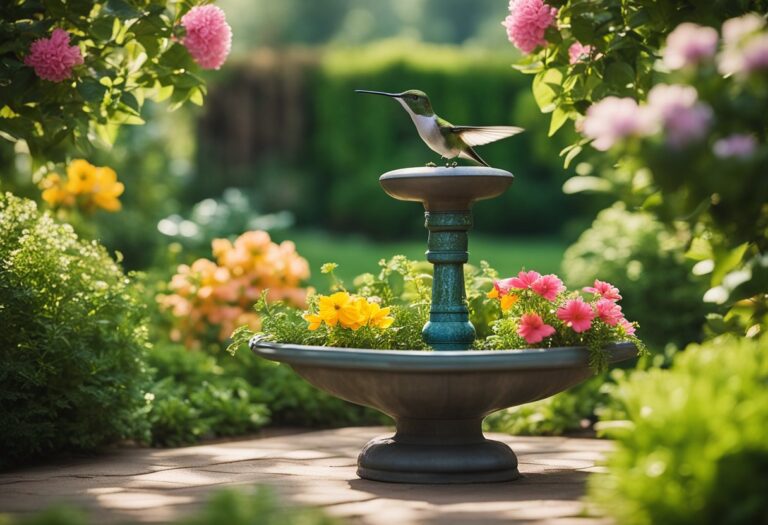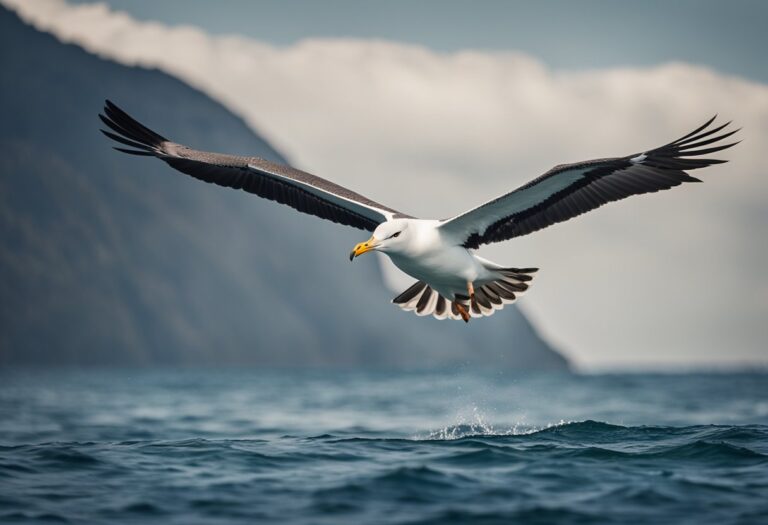From tiny hummingbirds that may live just a few years to large seabirds that can survive for decades, the variation is truly impressive. But which bird lives the longest

The longest-living bird is Wisdom, a female Laysan albatross who is over 70 years old and still actively breeding in the wild. This extraordinary albatross has been tracked since she was banded in 1956 and continues to amaze scientists with her endurance. While some birds in captivity have lived longer, Wisdom holds the distinction of being the oldest known wild bird with documented evidence.
Other impressively long-lived birds include the Andean condor, which can survive up to 50 years in the wild. These massive birds, with wingspans reaching 10 feet, represent some of nature’s most enduring avian species. I find it remarkable that these creatures can witness multiple human generations throughout their lengthy lives.
Key Takeaways
- Wisdom the Laysan albatross is the longest-living wild bird at over 70 years old and still reproduces.
- Large birds like albatrosses and condors typically have much longer lifespans than smaller bird species.
- Scientists track bird longevity through banding programs that provide valuable data for conservation efforts.
Bird Longevity
The lifespan of birds varies dramatically across species and is influenced by several biological and environmental factors. I’ve found that some birds live surprisingly long lives while others have much shorter lifespans.
Factors Longevity in Birds
Size plays a crucial role in bird longevity. I’ve observed that larger bird species typically live longer than smaller ones. This correlation isn’t perfect, but it’s a strong pattern in avian biology.
Metabolism also affects lifespan. Birds with slower metabolic rates often enjoy longer lives. I’ve noted that predation risk significantly impacts longevity in wild birds – species with fewer natural predators tend to live longer.
Habitat quality directly influences survival rates. Birds living in stable, resource-rich environments typically outlive those in harsh or degraded habitats.
Reproduction strategy matters too. Species that produce fewer offspring but invest more in each one (like albatrosses and eagles) generally live longer than those with high reproductive rates.
Life Span Variations Among Bird Species
The variation in bird lifespans is remarkable. I’ve discovered that the Laysan albatross holds the record for longest-lived wild bird, with one named Wisdom estimated to be at least 70 years old.
Large birds of prey show impressive longevity. Bald eagles can live up to 38 years in the wild, while Andean condors may reach 50 years.
Notable Long-Lived Birds:
- Parrots: 50+ years
- Albatrosses: 50+ years
- Sandhill Cranes: 37 years
- Great Blue Herons: 24 years
Smaller songbirds typically have shorter lifespans, often 2-8 years in the wild. I’ve found that captive birds generally outlive their wild counterparts due to protection from predators, disease, and food scarcity.
The Longest-Lived Birds

Birds can achieve remarkable lifespans that often surprise people. Some seabirds have evolved exceptional longevity, with certain species regularly living for decades in challenging ocean environments.
Albatrosses: The Flying Mariners
Albatrosses are the champions of bird longevity. The Laysan Albatross named Wisdom is currently the oldest known wild bird in the world, having surpassed 70 years of age. This is particularly impressive because she continues to breed and raise chicks even at this advanced age.
Albatrosses spend most of their lives soaring over vast oceans, rarely touching land except to breed. I find their long lifespans are linked to their slow reproductive rate – they typically lay just one egg every 1-2 years.
These magnificent birds have several adaptations that contribute to their longevity:
- Efficient flight techniques that conserve energy
- Strong pair bonds that last for decades
- Exceptional navigation abilities
Their lengthy lifespans allow them to develop extensive knowledge of ocean conditions and feeding grounds.
Petrels: Masters of the Sea Wind
Petrels are another group of seabirds with impressive longevity. These ocean wanderers can live 30-40 years in the wild, with some species potentially reaching even greater ages. Like their albatross relatives, petrels have adapted to harsh marine environments.
I’ve learned that their long lifespans correlate with their breeding habits. Many petrel species nest in burrows on remote islands, laying just a single egg per season. This slow reproductive strategy allows them to invest heavily in each offspring.
Petrels have developed remarkable physiological adaptations:
- Efficient salt glands to process seawater
- Specialized stomach oils for energy storage
- Enhanced ability to detect food across vast ocean distances
Their delayed maturity (some don’t breed until age 5-10) contributes to their extended lifespans, allowing them to perfect their survival skills before reproducing.
Conservation and Research

Conservation efforts play a crucial role in protecting long-lived bird species, while research continues to reveal fascinating insights about avian aging processes. Both are essential for ensuring these remarkable birds continue to thrive for generations to come.
Impact of Conservation on Avian Lifespan
Conservation programs have made significant differences for many long-lived bird species. The Laysan Albatross, including Wisdom who has surpassed 70 years, benefits from protected nesting areas and reduced fishing hazards.
Without these protections, many albatrosses wouldn’t reach their potential lifespan. I’ve found that habitat preservation directly correlates with increased longevity in wild bird populations.
For large parrots like the African Grey, which can live up to 60 years, conservation efforts include:
- Anti-poaching initiatives
- Breeding programs
- Education about illegal pet trade
- Habitat protection in native ranges
These measures help ensure these intelligent, long-lived birds don’t disappear from the wild.
Ongoing Research in Avian Longevity
Scientists are actively studying why birds live so long compared to mammals of similar size. I’m following research that shows birds appear to have unique anti-aging mechanisms, making them what some call “anti-aging superstars”.
The North American Bird Banding Program continues to gather valuable data on wild bird longevity. Their database tracks the oldest known individuals of each species, providing crucial information for researchers.
Current studies focus on several key areas:
- DNA repair mechanisms in long-lived species
- Metabolic efficiency despite high energy demands
- Cellular resistance to oxidative stress
- Telomere maintenance in birds
This research not only helps us understand avian biology but might eventually offer insights into human aging processes as well.
Frequently Asked Questions
Birds show remarkable diversity in their lifespans, with some species living decades longer than humans might expect. The following questions address the most fascinating aspects of avian longevity across wild and captive populations.
What species of bird is known for having the longest overall lifespan?
The albatross family, particularly the Laysan albatross, holds the record for longest-living wild birds. One famous Laysan albatross named Wisdom is estimated to be over 70 years old and still actively breeding in the wild.
The oldest confirmed wild bird I’ve found in my research is this remarkable albatross. These seabirds have evolved exceptional longevity that helps them survive the harsh conditions of their oceanic lifestyle.
Can any birds live to or beyond a century in age?
While no wild birds have been confirmed to reach 100 years, some large parrots in captivity have reportedly approached this milestone. However, these claims are often difficult to verify without proper documentation.
The longest-living bird on record was Cookie, a pink cockatoo that lived past 80 years in captivity. With improving care standards and better documentation, we may eventually confirm a century-old bird.
What are some of the top avian species known for their longevity?
Several bird species demonstrate remarkable longevity. Sandhill cranes and bald eagles can live more than 35 years in the wild.
Canada geese, Atlantic puffins, and some large gulls can reach more than 30 years of age. Many large raptors like the red-tailed hawk have been recorded living up to 30 years.
Which pet birds are recognized for having the longest lifespans?
Among pet birds, large parrots typically live the longest. Macaws, cockatoos, and Amazon parrots commonly live 50-70 years with proper care, and some individuals have been documented reaching their 80s.
African Grey parrots also have impressive lifespans, typically 40-60 years in captivity. These intelligent birds often form lifelong bonds with their caretakers.
Smaller parrots like cockatiels and budgerigars have shorter but still impressive lifespans of 15-25 years, which exceeds many other pets of similar size.
Is there a bird that can outlive the typical human lifespan?
Few birds can consistently outlive humans, but some individual large parrots and albatrosses do exceed the typical human lifespan in certain cases. The Laysan albatross Wisdom has already outlived many humans.
With a global average human lifespan of about 73 years, only a handful of bird species have individuals that potentially exceed this threshold. These exceptional birds represent the extreme upper limit of avian longevity.
What are the average lifespans of various notable long-living bird species?
Albatrosses typically live 40-60 years in the wild, with exceptional individuals reaching 70+. Large parrots average 50-70 years in captivity when properly cared for.
Eagles and condors generally live 30-50 years, with bald eagles reaching more than 35 years. Ravens and crows, despite their smaller size, can live 20-30 years.
Wild turkeys typically live up to 15 years, while smaller songbirds like chickadees and robins generally live just 5-10 years in the wild.






